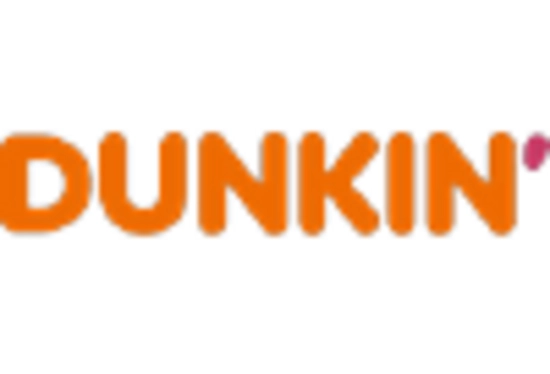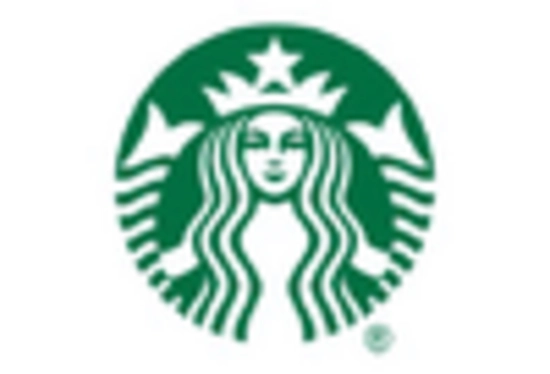Sustainability and Ethical Sourcing
Sustainability practices are becoming increasingly vital within the Foodservice Coffee Market, as consumers are more inclined to support brands that prioritize ethical sourcing and environmental responsibility. Many coffee consumers are now seeking products that are certified organic or fair trade, reflecting a broader trend towards conscious consumption. This shift has prompted foodservice operators to establish partnerships with suppliers who adhere to sustainable practices. Data indicates that establishments that emphasize sustainability in their coffee offerings often see enhanced customer loyalty and brand reputation. As awareness of environmental issues continues to grow, the integration of sustainable practices in coffee sourcing and preparation is likely to become a key differentiator in the competitive foodservice landscape.
Growth of Coffee Culture and Social Spaces
The Foodservice Coffee Market is benefiting from the burgeoning coffee culture, which has transformed coffee shops into social hubs. This trend is characterized by the increasing popularity of cafes as gathering places for social interaction, work, and leisure. The rise of remote work has further fueled this phenomenon, as individuals seek comfortable environments to conduct business or relax. Data indicates that coffee shops are increasingly offering amenities such as free Wi-Fi and cozy seating arrangements, enhancing their appeal as multifunctional spaces. This cultural shift not only drives foot traffic but also encourages foodservice operators to create inviting atmospheres that cater to diverse customer needs, thereby boosting coffee sales.
Rising Consumer Preference for Specialty Coffee
The Foodservice Coffee Market is experiencing a notable shift towards specialty coffee, driven by consumers' increasing desire for unique flavors and high-quality brews. This trend is reflected in the growing number of coffee shops and cafes that emphasize artisanal and gourmet offerings. According to recent data, specialty coffee sales have surged, accounting for a significant portion of the overall coffee market. This shift not only enhances customer experience but also encourages foodservice establishments to innovate their coffee menus. As consumers become more discerning, the demand for specialty coffee is likely to continue its upward trajectory, compelling foodservice operators to adapt and diversify their offerings to meet evolving preferences.
Technological Advancements in Coffee Preparation
Technological integration is reshaping the Foodservice Coffee Market, with advancements in brewing equipment and point-of-sale systems enhancing operational efficiency and customer experience. Innovations such as automated espresso machines and mobile ordering apps are streamlining service and allowing for greater customization of coffee beverages. Data suggests that establishments utilizing advanced technology can improve service speed and accuracy, leading to higher customer satisfaction. Furthermore, the rise of data analytics in understanding consumer preferences enables foodservice operators to tailor their offerings more effectively. As technology continues to evolve, its role in the coffee service sector is expected to expand, potentially transforming how coffee is prepared and served.
Expansion of Coffee Offerings and Menu Diversification
The Foodservice Coffee Market is witnessing a trend towards menu diversification, as establishments expand their coffee offerings to include a variety of beverages and flavor profiles. This expansion is driven by consumer demand for innovative and unique coffee experiences, prompting foodservice operators to experiment with different brewing methods, flavor infusions, and seasonal specialties. Data shows that cafes and restaurants that diversify their coffee menus often experience increased customer engagement and repeat visits. By incorporating non-traditional coffee beverages, such as cold brews and nitro coffee, foodservice operators can attract a broader audience and enhance their competitive edge in the market. This trend towards diversification is likely to continue as consumer preferences evolve.

















Leave a Comment